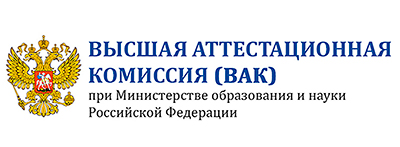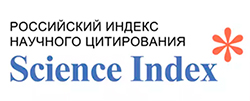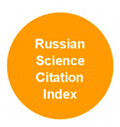Влияние демографических изменений на систему частных межпоколенных трансфертов
Аннотация
В статье рассматриваются последствия демографических изменений для системы частных межпоколенных трансфертов. Выявлены основные демографические факторы частных межпоколенных трансфертов, среди которых изменение в возрастной структуре населения, распространённость разводов, повторных браков, незарегистрированных союзов, повышение миграционной активности населения, процесс нуклеаризации, а также проанализировано их влияние на систему частных межпоколенных трансфертов.
Скачивания
Литература
Alter G.C. (2013). Generation to generation life course, family, and community // Social science history. 37(1): 1–26.
Barsukova S. (2004). Nerynochnye obmeny mezhdu rossiiskimi domokhoziaistvami teoriia i praktika retciproknosti [Non-market exchanges between Russian households: the theory and practice of reciprocity] // Preprint WP4/2004/02. Seriia WP4. Sotciologiia rynkov Moscow: GU-VSHE [Working Paper WP4/2004/02. WP4 Series. Sociology of Markets. Moscow: HSE].
Beard J., S. Biggs, D.E. Bloom, L.P. Fried, P.R. Hogan, A. Kalache, S.J. Olshansky (2012). Global population ageing: peril or promise? // Program on the global demography of aging. 8912.
Bengtson V.L. (2001). Beyond the nuclear family: The increasing importance of multigenerational bonds // Journal of marriage and family. 63(1): 1–16.
Bernheim B.D., A. Shleifer, L.H. Summers (1985). The strategic bequest motive // Journal of political economy. 93(6): 1045-1076.
Chaianov A.V. (1989). Krestianskoe khoziaistvo [Peasant economy]. Izbrannyie trudyi [Selected works]. Moscow: Ekonomika. 492 p.
Demoscope Weekly Supplement (2016). Ozhidaemaya prodolzhitelnost zhizni pri rozhdenii, 1960-2013 (let) [Life expectancy at birth, 1960-2013 (years)]. URL: http://demoscope.ru/weekly/app/app40e0.php; Srednii vozrast materi pri rozhdenii pervogo rebenka, 1950-2012 [Average age at first birth, 1950-2012]. URL: http://demoscope.ru/weekly/app/app40acb1.php (accessed: 12.04.2016).
Denisenko M.B. (2005). Tikhaia revoliutciia [Quiet Revolution] // Otechestvennye zapiski [Homeland Notes]. 3 (23). URL: http://www.strana-oz.ru/2005/3/tihaya-revolyuciya (accessed: 12.04.2016).
Ekonomicheskaia aktivnost naseleniia Rossii - 2014 [Economic activity of Russian population – 2014]. Moscow: Rosstat. URL: gks.ru (accessed: 12.04.2016).
Frejka T., S. Zakharov (2014). Evoliutciia rozhdaemosti v Rossii za polveka: optika uslovnykh i realnykh pokolenii [The evolution of fertility in Russia for half a century: conventional optics and real generations] // Demograficheskoe obozrenie [Demographic review]. 1(1): 106-143. URL: https://www.hse.ru/pubs/share/direct/document/135361911 (accessed: 12.04.2016).
Furstenberg F.F., S.D. Hoffman, L. Shrestha (1995). The effect of divorce on intergenerational transfers: new evidence // Demography. 32(3): 319-333.
Gaymu J., P. Festy, M. Poulain, G. Beets (2008). Future elderly living conditions in Europe // Les cahiers de l’INED. 162. Paris: INED. 162 p.
Hogan D.P., D.J. Eggebeen, C.C. Clogg (1993). The structure of intergenerational exchanges in American families // American journal of sociology. 98(6): 1428-1458.
Kaneko R. (2007). Population prospects of the lowest fertility with the longest life: the new official population projections for Japan and their life course approaches // Work session on demographic projections, Bucharest, Luxembourg: EUROSTAT Methodology and working papers, Office for official publications of the European communities.
Keilman N., S. Christiansen (2010). Norwegian elderly less likely to live alone in the future // European journal of population. 26(1).
Kotlikoff L., C. Burns (2005). Pensionnaia sistema pered burei: to, chto nuzhno znat kazhdomu o finansovom buduschem svoey stranyi [The pension system before the storm: what everybody has to know about financial future of its country]. Trans. from English. M.: Alpina Business Books. 348 p.
Kotlikoff L.J., A. Spivak (1981). The family as an incomplete annuities market // Journal of political economy. 89: 372-391.
Laslett P. (1990). A fresh map of life: the emergence of the third age. London. 213 p.
Laslett P. (1996). What is old age? Variation over the time and between cultures / G. Caselli, A. Lopez, eds. Health and mortality among elderly populations. Oxford: 21-38
Lezhnina J.P. (2010). Sotcialno-demograficheskie faktory opredeliaiushchie risk bednosti i maloobespechennosti [Socio-demographic factors that determine the risk of poverty and poverty] // Sotciologicheskie issledovaniia [Sociological studies]. 3: 36-45.
Litwak E. (1960). Occupational mobility and extended family cohesion // American sociological review. 25(3): 385-394.
Neugarten B.L. (1974). Age groups in American society and the rise of the young-old //The annals of the American academy of political and social science. 415(1): 187-198.
Nikitenko V.V. (1979). Demograficheskii analiz pokolenii [Demographic analysis of generations]. Moscow.
Ovcharova L., L. Prokofieva (2000). Bednost i mezhsemeinaia solidarnost v Rossii v perekhodnyi period [Poverty and inter-family solidarity in Russia during the transition period] // Monitoring obshchestvennogo mneniia [Monitoring of public opinion]: 4(48).
Parsons T. (1955). The American family: its relation to personality and to the social structure / T. Parsons, R. Bales. Family, socialization and interaction process. Glencoe: Free Press: 10–26.
Pervaya vseobshchaya perepis' naseleniya Rossiiskoi Imperii 1897 goda [The First General Census of Russian Empire of 1897] (1905). Obshchii svod po imperii rezultatov razrabotki dannykh pervoi vseobshchei perepisi naseleniia proizvedennoi 28 ianvaria 1897 goda [General results of the elaboration of data of the Russian Empire first census carried out on January 28, 1897]. Vol.1, 2. Saint Petersburg: Central Statistical Committee.
Pezzin L.E., B.S. Schone (1999). Parental marital disruption and intergenerational transfers: an analysis of lone elderly parents and their children // Demography. 36(3): 287-297.
Popenoe D. (1993). American family decline, 1960-1990: A review and appraisal // Journal of marriage and the family. 55: 527-555.
Raspredelenie maloimushchego naseleniia po osnovnym gruppam po materialam vyborochnogo obsledovaniia biudzhetov domashnikh khoziaistv (2012). [Distribution of the poor by main groups according to a sample survey of household budgets]. Moscow: Rosstat. URL: www.gks.ru (accessed: 01.09.2015).
RMEZ [RLMS] (2013).The Russia longitudinal monitoring survey - Higher school of economics. URL: https://www.hse.ru/en/rlms/ (accessed: 12.04.2016).
Rozenzweig M.R. (1994). Transfers from parents to their adult children in the developed and the developing countries // Ageing and the family. New York: 195.
Ruzhzhe V.L., T.S. Kadibur, I.I. Eliseeva (1976). Struktura i funktcii semeinykh grupp [The structure and function of family groups]. M.
Sovi A. (1977). Obshchaia teoriia naseleniia [The general theory of population]. Vol. 2. Life of generations. Trans. with France. M.: Progress.
Sussman M., J. Cates, J. Smith (1970). The family and inheritance. Russell sage foundation.
Tyndik S.A. (2015). Moskva na fone Rossii rezultaty noveishikh issledovanii reproduktivnogo povedeniia naseleniia [Moscow against the background of Russia: results of the latest studies of reproductive behavior of the population] // XV the April International Academic Conference on Economic and Social Development: in 4 books / E. Yasin, ed. Moscow.: Publishing house of the HSE.
Vishnevsky A.G. (2005). Pokhvala stareniiu [Praise to aging] // Otechestvennye zapiski [Homeland notes]. 3(24). URL: http://www.strana-oz.ru/2005/3/pohvala-stareniyu (accessed: 12.04.2016).
Vishnevsky A.G. (2008). Evoliutciia rossiiskoi semi [Russian family evolution] // Ekologiia i zhizn [Ecology and life]. №8: 8-13.VNDN (2012).
Vyborochnoe nabliudenie dokhodov naseleniia i uchastiia v sotcialnykh programmakh - 2012 [Selective monitoring income and participation in social programs]. Moscow: Rosstat. URL: http://www.gks.ru/free_doc/new_site/USP/survey0/data/description.pdf (accessed: 12.04.2016).
Volkov A. (1996). Semeinaia struktura naseleniia Rossii: faktory i tendentcii [The family structure of the Russian population: factors and trends] // Rossiiskii demograficheskii zhurnal [Russian demographic journal]. 1.
Vserossiiskaia perepis naseleniia – 2010 (2010) [Russian Population Census - 2010]. Moscow: Rosstat. URL: http://www.gks.ru/free_doc/new_site/perepis2010/croc/perepis_itogi1612.htm (accessed: 12.04.2016).
Watkins S.C., J.A. Menken, J. Bongaarts (1987). Demographic foundations of family change // American sociological review. 52 (3): 346-358.
Zakharov S.V. (2005). Perspektivy rozhdaemosti v Rossii: vtoroi demograficheskii perekhod [Birth prospects in Russia: the second demographic transition] // Otechestvennye zapiski [Homeland Notes]. №3 (24). URL: http://www.strana-oz.ru/2005/3/perspektivy-rozhdaemosti-v-rossii-vtoroy-demograficheskiy-perehod (accessed: 12.04.2016).
Zakharov S.V. (2013). Kuda dvizhetsia supruzhestvo v Rossii? [Where is marriage in Russia?] Demoscope weekly. №545-546. URL: http://demoscope.ru/weekly/2013/0545/tema06.php (accessed: 01.09.2015).
Zider R. (1997). Sotcialnaia istoriia semi v Zapadnoi i Tcentralnoi Evrope (konetc 18-20 vv.) [The social history of the family in Western and Central Europe (end of 18-20 centuries)]. M.: Publishing center for humanities VLADOS.
























